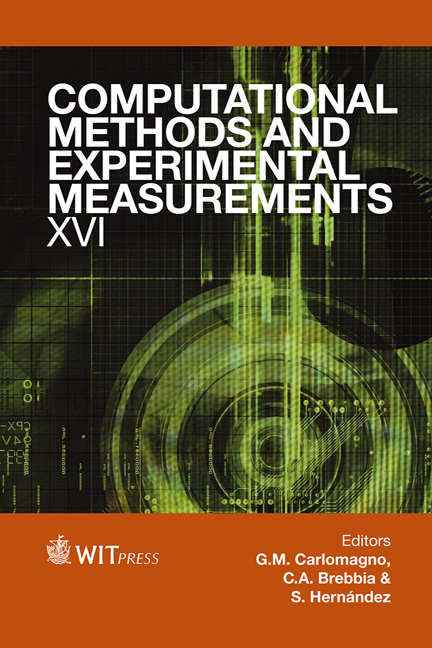Efficient Eigenvalue Numerical Solutions For Time Dependent Linear Systems
Price
Free (open access)
Transaction
Volume
55
Pages
12
Page Range
43 - 54
Published
2013
Size
1,321 kb
Paper DOI
10.2495/CMEM130041
Copyright
WIT Press
Author(s)
R. C. Callarotti& E. J. Paez
Abstract
We discuss the new application of an efficient numerical method for the calculation of the response of linear multidimensional systems: incompressible fluid flow, heat transfer, electromagnetic problems, and electrochemical systems. The method avoids finite difference time iterations that can diverge for large (Δt) intervals. The method determines the poles and zeros for the different systems allowing the direct calculation of the time response of the different systems from trivial evaluation of inverse Laplace transforms. The new application is concerned with finding the temperature distribution inside a cylindrical extra heavy oil reservoir (API ~ 1) excited by microwave (5 GHz) power. The power is applied at the surface of the earth, transmitted via a circular waveguide operating in the TE01 mode (length 1000 meters), inserted at the center of the reservoir. Our numerical procedure is based on: (i) spatially discretizing the system, (ii) deriving an equivalent circuit for each volume element, (iii) applying a time Laplace transformation and obtaining an admittance matrix, (iv) writing the expressions for the Laplace transforms of the desired variables according to Cramer’s determinant rule, (v) interpreting the determinants as generalized eigenvalue problems, (vi) obtaining the proper eigenvalues of the system (poles and zeros), and (vii) finding the time-dependent solutions by ‘trivial’ inverse Laplace transformations. In this paper we compare this solution with standard finite difference solutions. We discuss the advantages derived from the application of our proper eigenvalue approach which provides an analytical solution for the calculation of reservoir heating at ANY desired time. From a control theory point of view this
Keywords
eigenvalues, numerical procedures, heat conduction, microwave petroleum excitation, heavy oil production





